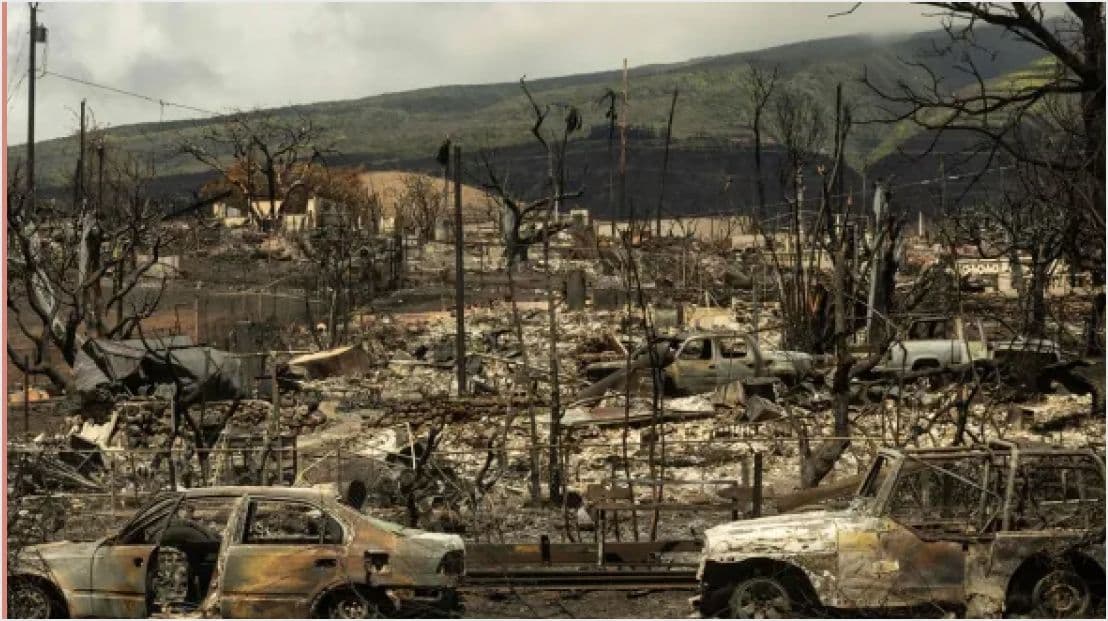
After a week of fierce wildfires in parts of Hawaii’s Maui Island in the US, the death toll continues to rise. As of Tuesday noon local time, 99 people have died and over 1,000 remain missing. This has been labeled by the US media as the deadliest wildfires in the country in a century. The dire situation in the affected areas has inflicted immense psychological shock upon the American people. Reports said local residents have “lost everything,” with some even being “forced to jump into the Pacific Ocean to escape the smoke and fire conditions.” Criticisms of failures in warnings, inadequate disaster relief efforts, and inaction from the stationed US military in Hawaii have fueled “growing anger.”
Such a large number of casualties would be a major disaster in any country, and it is even more shocking when it occurs in the world’s most developed country. The US is prone to natural disasters such as wildfires and hurricanes. However, the country’s patchy response when dealing with these disasters is perplexing. The US has always proclaimed itself as a “world leader” and claims to be capable of responding rapidly to security threats around the globe. It possesses over 800 military bases overseas and projects its military power with aircraft carriers worldwide. But when it comes to domestic disasters or public safety incidents within the US, its response is slow and its ability to cope seems inadequate.
Although Hawaii is not located on the continental US, it remains one of the most critical military bases for the country. Hawaii serves as the headquarters of the US Indo-Pacific Command. The Indo-Pacific Command claims to “govern” over 50 percent of the world’s surface area, but ironically remains indifferent to the disasters that occur in its own location. What has fueled anger among the local community is the fact that the initial relief work was largely organized by residents themselves, with little presence from the National Guard, Federal Emergency Management Agency (FEMA), state government, or local authorities. An American internet user sarcastically remarked, “Our warships can provoke China in the South China Sea, they can shadow China in Alaska, but they can’t come to Hawaii to help Americans.” This aptly illustrates the hierarchy of decision-making in the US.
US sluggish and indifferent response to its domestic catastrophic incidents sharply contrasts with its fervent resource mobilization in “competition” with other nations. Leaving a deep impression on us, there was the Hurricane “Katrina” in 2005 that resulted in the loss of 1,836 lives, and the train derailment in East Palestine earlier this year carrying hazardous chemicals. There was also the Florida building collapse in 2021 that claimed 98 lives, and the slow rescue efforts during that time were referred to as “archaeological-style rescue.” A foreign netizen said, “The ‘American-style rescue’ in Hollywood movies is nowhere to be seen, with no American rescue heroes or high-tech equipment.” This observation seems to be perfectly fitting for every disaster in America, including the current Hawaii wildfires.
While the wildfires were raging in Hawaii, what was Washington busy with? It was occupied with imposing investment restrictions on China, preparing for the Camp David summit with Japan and South Korea, and announcing $200 million in new military aid to Ukraine. However, the specific amount of assistance provided by the FEMA for the Hawaii wildfires, as announced to date, is a payment of $700 per household. The few discussions about the wildfires mostly serve as the latest pretext for mutual attacks between the two parties. The American media, which has always emphasized “supervision,” seems to consider all of this as a matter of course, leading to the repetition of the same events without any profound reflection.
The US actively exercises hegemony in its foreign affairs, and its internal mechanisms are very backward, failing to take the protection of citizens’ security as the starting point and foundation of national security. Specifically, the US wastes a large amount of resources meaninglessly in fighting against “imaginary external opponents,” while ignoring the life-threatening threats faced by its domestic population. The US focuses its investment in military power and military-related technological fields in terms of national security, while investing inadequately in domestic infrastructure construction, disaster reduction, and relief efforts that concern people’s wellbeing and national security.
The problems exposed by the deadly wildfires in Hawaii belong to the entire US. We can see that from the “9/11” attacks to the present, the US has witnessed numerous major events related to citizens’ security. However, there has been almost no obvious improvement in the construction of institutional mechanisms for responding to domestic disasters and accidents by the US government. The US government prefers to hype harmless balloon accidents as major security threats, but remains “calm” about the tragic disasters causing significant casualties right in front of it. When the next disaster strikes, the performance of the US government is unlikely to be any better. Every disaster is a reminder to the US, using innocent lives to remind it who its real enemies and challenges are. The US’ disregard for this reminder is the greatest desecration of the lives lost.
@(Global Times)
danfetv.com


